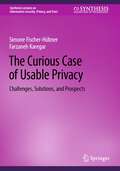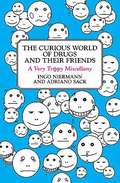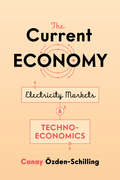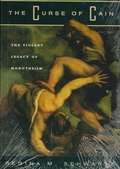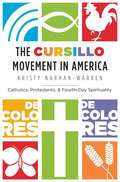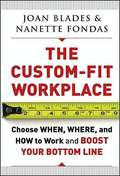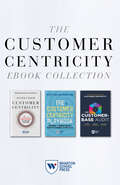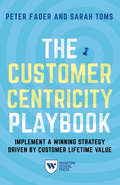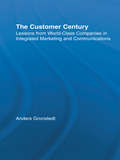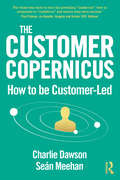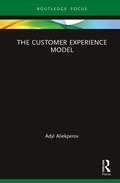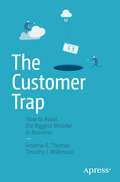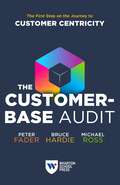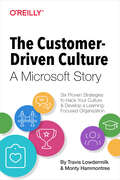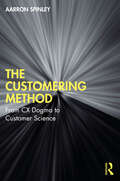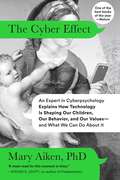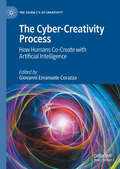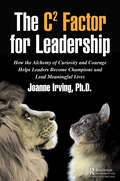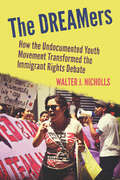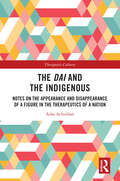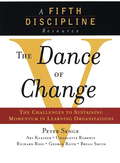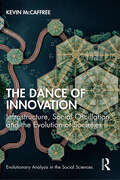- Table View
- List View
The Curious Case of Usable Privacy: Challenges, Solutions, and Prospects (Synthesis Lectures on Information Security, Privacy, and Trust)
by Simone Fischer-Hübner Farzaneh KaregarThis book journeys through the labyrinth of usable privacy, a place where the interplay of privacy and Human-Computer Interaction (HCI) reveals a myriad of challenges, solutions, and new possibilities. Establishing a solid understanding of usable privacy research, practices, and challenges, the book illuminates for readers the often shadowy corridors of such a multifaceted domain and offers guidelines and solutions to successfully traverse the challenging maze. The book does not simply focus on data protection or legislative frameworks but also on what it takes for privacy to be safeguarded, understood, embraced, and easily practiced by all. It begins with a thorough exploration of the background of privacy tools and technologies, the evolution of privacy rules and regulations, and the backdrop upon which this narrative unfolds. After establishing this context, its next important focus is the current state and future directions of the field, including thefrontiers of usable privacy research in relation to the Internet of Things (IoT), usability of PETs, and usable privacy for UX and software developers. The book also considers the often-overlooked privacy narratives of marginalized communities and delves into the complexities of user-centric privacy. Readers are provided with a blueprint for addressing these hurdles and establishing pathways for a more privacy-conscious world. The text will be of interest to students studying Computer Science, Information Systems, or Law, as well as researchers and practitioners working in the fields of usable privacy, privacy by design, Privacy-Enhancing Technologies (PETs), or HCI. All will benefit from the book’s central deliberation of a question that echoes through time and technological advancements: why does usable privacy matter?
The Curious World of Drugs and Their Friends
by Ingo Niermann Adriano SackRead Adriano Sack's posts on the Penguin Blog. "Curiouser and curiouser" --fun and fascinating facts from the world of drugs. Following in the tradition of The Ultimate Book of Useless Information, The Curious World of Drugs and Their Friends is a wry potpourri of interesting information about every conceivable kind of drug. Readers can feed their heads with anecdotes, facts, lists, statistics, and illustrations, including: * The test results of animals on LSD--cats lose their fear of dogs, and goats walk in geometric patterns * Drugs found in nature, from magic mushrooms to St. John's wort to beaver secretions * Celebrities who overdosed at age 27--Jimi Hendrix, Janis Joplin, Jim Morrison, Kurt Cobain, Brian Jones, and Jean Michel-Basquiat * Imaginary drugs in literature and film, from spice the mélange in Dune to Moloko plus in A Clockwork Orange * Nicknames for a joint--from doobie to giggly stick to Mr. Boom Bizzle * The global percentages of adults who have used cannabis--.004 percent in Singapore and 12.6 percent in the United States * The uses of opium in ancient Rome--from treatments for insomnia and epilepsy to colic and deafness * The most glamorous rehab clinics and their celebrity alumni * Mini-biographies of the biggest drug kingpins around the world Wacky but well-researched, unbiased and shameless, The Curious World of Drugs and Their Friends dares to take readers on a long, strange trivia trip.
The Current Economy: Electricity Markets and Techno-Economics
by Canay Özden-SchillingElectricity is a quirky commodity: more often than not, it cannot be stored, easily transported, or imported from overseas. Before lighting up our homes, it changes hands through specialized electricity markets that rely on engineering expertise to trade competitively while respecting the physical requirements of the electric grid. The Current Economy is an ethnography of electricity markets in the United States that shows the heterogenous and technologically inflected nature of economic expertise today. Based on ethnographic fieldwork among market data analysts, electric grid engineers, and citizen activists, this book provides a deep dive into the convoluted economy of electricity and its reverberations throughout daily life. Canay Özden-Schilling argues that many of the economic formations in everyday life come from work cultures rarely suspected of doing economic work: cultures of science, technology, and engineering that often do not have a claim to economic theory or practice, yet nonetheless dictate forms of economic activity. Contributing to economic anthropology, science and technology studies, energy studies, and the anthropology of expertise, this book is a map of the everyday infrastructures of economy and energy into which we are plugged as denizens of a technological world.
The Curriculum of the Body and the School as Clinic: Histories of Public Health and Schooling (Critical Studies in Health and Education)
by Helen Proctor Kellie BurnsThis collection brings together cutting-edge research on the history of embodiment, health and schooling in an international context. The book distinguishes a set of educational technologies, schooling practices and school-based public health programmes that organise and influence the bodies of children and young people, defining the curriculum of the body. Taking a historical approach, with a focus on the period in which mass schooling became an international phenomenon, the book is organised according to four major themes. The first positions the school as a modern clinical space, followed by the second that explores programmes and curricula which influence the discipline of and care for the body. The third section examines the role of the built environment on the organisation and experience of children’s bodies, and the final section outlines the pedagogies, rules and routines that determine how the body is treated and experienced in school. International and multidisciplinary in scope, this unique collection is of interest to postgraduate students and researchers in education and public health, as well as history, policy studies and sociology.
The Curriculum of the Body and the School as Clinic: Histories of Public Health and Schooling (Critical Studies in Health and Education)
by Helen ProctorThis collection brings together cutting-edge research on the history of embodiment, health and schooling in an international context. The book distinguishes a set of educational technologies, schooling practices and school-based public health programmes that organise and influence the bodies of children and young people, defining the curriculum of the body.Taking a historical approach, with a focus on the period in which mass schooling became an international phenomenon, the book is organised according to four major themes. The first positions the school as a modern clinical space, followed by the second that explores programmes and curricula which influence the discipline of and care for the body. The third section examines the role of the built environment on the organisation and experience of children’s bodies, and the final section outlines the pedagogies, rules and routines that determine how the body is treated and experienced in school.International and multidisciplinary in scope, this unique collection is of interest to postgraduate students and researchers in education and public health, as well as history, policy studies and sociology.
The Curse of Cain: The Violent Legacy of Monotheism
by Regina M. SchwartzThe Curse of Cain confronts the inherent ambiguities of biblical stories on many levels and, in the end, offers an alternative, inspiring reading of the Bible that is attentive to visions of plenitude rather than scarcity, and to an ethics based on generosity rather than violence.
The Cursillo Movement in America
by Kristy Nabhan-WarrenThe internationally growing Cursillo movement, or "short course in Christianity," founded in 1944 by Spanish Catholic lay practitioners, has become popular among American Catholics and Protestants alike. This lay-led weekend experience helps participants recommit to and live their faith. Emphasizing how American Christians have privileged the individual religious experience and downplayed denominational and theological differences in favor of a common identity as renewed people of faith, Kristy Nabhan-Warren focuses on cursillistas--those who have completed a Cursillo weekend--to show how their experiences are a touchstone for understanding these trends in post-1960s American Christianity. Drawing on extensive ethnographic fieldwork as well as historical research, Nabhan-Warren shows the importance of Latino Catholics in the spread of the Cursillo movement. Cursillistas' stories, she argues, guide us toward a new understanding of contemporary Christian identities, inside and outside U.S. borders, and of the importance of globalizing American religious boundaries.
The Custom-Fit Workplace
by Nanette Fondas Joan BladesIdeas for transforming the workplace to fit today's workforceIn this book, Blades and Fondas offer business professionals an indispensable handbook for transforming the way we work and breaking free from the old, inflexible, 40-hour workweek. The authors show creative ways for individuals to fit work requirements with life obligations, and persuade managers to adopt these custom-fit work strategies to improve their bottom line. Readers will finish the book convinced of the place of custom-fit work arrangements in today's workplace--and of how honoring employees' lives outside of work is an effective and innovative strategy for both managers and organizations. Featuring compelling stories of companies like Jet Blue, Ernst & Young, and Best Buy, the book profiles strategies that are gaining traction in workplaces across the country: · New twists on traditional flexible hours and part-time work strategies· Virtual workplaces· Results-Only Work Environments (ROWEs)· "Babies at Work" programs· "On ramp and off ramp" opportunitiesPractical and engaging, The Custom-Fit Workplace provides individuals and employers the tools they need to be successful and happy both at work and in life.
The Customer Centricity Ebook Collection (3 Books): Customer Centricity, The Customer Centricity Playbook, and The Customer-Base Audit
by Peter Fader Michael Ross Sarah E. Toms Bruce G. HardieAvailable for the First Time—Three Books in One!The Customer Centricity Ebook Collection is a must-have for any business leader looking to understand and implement customer-centric strategies. This collection includes three essential books by renowned experts Peter Fader, Bruce Hardie, Michael Ross, and Sarah Toms, all of whom are leaders in the field of customer centricity.The collection includes three books in a single volume:> Customer Centricity, by Peter Fader> The Customer Centricity Playbook, by Peter Fader and Sarah Toms> The Customer-Base Audit, by Peter Fader, Bruce Hardie, and Michael RossThe Customer Centricity Ebook Collection offers a comprehensive guide to understanding, implementing, and measuring the impact of customer-centric strategies.
The Customer Centricity Playbook: Implement a Winning Strategy Driven by Customer Lifetime Value
by Peter Fader Sarah Toms2019 AXIOM BUSINESS BOOK AWARD WINNER Featured in Forbes, NPR’s Marketplace, and a Google Talk, The Customer Centricity Playbook offers “actionable insights to drive immediate value,” according to Neil Hoyne, Head of Customer Analytics and Chief Analytics Evangelist, Google. How did global gaming company Electronic Arts go from being named “Worst Company in America” to clearing a billion dollars in profit? They discovered a simple truth—and acted on it: Not all customers are the same, regardless of how they appear on the surface. In The Customer Centricity Playbook, Wharton School professor Peter Fader and Wharton Interactive’s executive director Sarah Toms help you see your customers as individuals rather than a monolith, so you can stop wasting resources by chasing down product sales to each and every consumer. Fader and Toms offer a 360-degree analysis of all the elements that support customer centricity within an organization. In this book, you will learn how to: Develop a customer-centric strategy for your organization Understand the right way to think about customer lifetime value (CLV) Finetune investments in customer acquisition, retention, and development tactics based on customer heterogeneity Foster a culture that sustains customer centricity, and also understand the link between CLV and market valuation Understand customer relationship management (CRM) systems, as they are a vital underpinning for all these areas through the valuable insights they provide Fader’s first book, Customer Centricity, quickly became a go-to for readers interested in focusing on the right customers for strategic advantage. In this new book, Fader and Toms offer a true playbook for companies of all sizes that want to create and implement a winning strategy to acquire, develop, and retain customers for the greatest value. “A must-read.” —Aimee Johnson, Chief Marketing Officer, Zillow “The Customer Centricity Playbook offers fundamental insights to point organizations of any size in the right direction.” —Rob Markey, Partner, Bain & Company, Inc., and coauthor, The Ultimate Question 2.0“Peter Fader and Sarah Toms offer transformative insights that light the path for business leaders.”—Susan Johnson, Chief Marketing Officer, SunTrust Banks
The Customer Century: Lessons from World Class Companies in Integrated Communications (Routledge Corporate Communication Ser.)
by Anders GronstedtBased on hundreds of hours of in-depth interviews with senior marketing and corporate communications managers from top companies such as Hewlett-Packard, Ericsson, Philips, and Xerox, this book is packed with hands-on advice to ensure business success in the new millennium. Companies must learn to integrate communications three dimensionally; externally with key customers, vertically between senior management and front-line workers, and horizontally across departments. Filled with hints, tips and strategies, this illuminating text shows readers the key to thriving in the upcoming ‘customer century’.
The Customer Copernicus: How to be Customer-Led
by Charlie Dawson Seán MeehanSome companies are great for customers – not only do they care but they change whole markets to work better for the customers they serve. Think of Amazon, easyJet and Sky. They make things easier and improve what really matters – obvious, surely? They have also enjoyed huge business success, growing and making plenty of money. The Customer Copernicus answers the question that follows – if it’s obvious and attractive why is it so rare? And then it answers a second question, because Tesco, O2 and Wells Fargo were like this once. Why, having mastered it, would you ever stop? Because all three did, and two ended up in court. The Customer Copernicus explains how to become and how to stay customer-led. Essential reading for leaders and teams who want their organisations to stay competitive by developing a more purposeful and innovative culture.
The Customer Experience Model (Routledge Focus on Business and Management)
by Adyl AliekperovFor any company, defining the most efficient marketing concept to create a competitive customer experience (CX) is vital for sustained development. The focus of this research is the creation of a comprehensible practical approach to the development of client experience: the Сustomer Experience Model (CXM). The practical application of the CX model will allow companies to create value for their customers and key stakeholders, thus generating the necessary profit and building conditions for further development. Balancing academic research and real-world applications, The Customer Experience Model provides a framework that readers can understand and utilize to implement improvements in a company. In this work the readers also will learn about application in customer experience formation of such concepts as "systems thinking", "learning organization", "Lewinian Experiential learning cycle". The role of a leader in the formation of an effective customer experience will be shown as well. Also the readers will get an obvious idea of how to plan customer experience and measure its effectiveness. The Customer Experience Model shows the latest state of knowledge on the topic and will be of interest both to students of business schools and universities at an advanced level, academics and reflective practitioners in the fields of leadership, organizational studies, marketing, and strategic management and consulting.
The Customer Trap
by Andrew R. Thomas Timothy J. WilkinsonAmerican business is dysfunctional. Companies of all sizes follow the mistaken belief that their products and services are best sold through mega-customers with pervasive market reach, such as Amazon and Walmart. Far too many business leaders fail to realize--until it is too late--that the relentless pursuit of volume at all cost is not the key to long-term profits and success. The Customer Trap: How to Avoid the Biggest Mistake in Business is Thomas and Wilkinson''s sequel to The Distribution Trap: Keeping Your Innovations from Becoming Commodities, which won the Berry-American Marketing Association Prize for the best marketing book of 2010. The Distribution Trap contended that cracking the big-box channel is not necessarily the Holy Grail that many marketers assume it is. The Customer Trap takes this thesis to the next level by arguing that all companies, regardless of the industry there are in, should maintain control over their sales and distribution channels. Volume forgone by avoiding the mass market is more than offset by higher margins and stronger brand equity. The Customer Trap shows that giving power to a customer who violates "the ten percent rule" sets a company up for ruin. Yet, when presented with the opportunity to push more sales through large customers, most decision-makers jump at the chance. As a result, marketing has come to resemble a relentless quest for efficiency and scale. Demands from mega-customers in the form of discounts, deals, and incentives erode the integrity of the brand and what it originally stood for. Lower margins become the norm and cost-saving compromises on quality take over. In time, the brand suffers and, in some cases, fails outright. Stark examples from Oreck Vacuum Cleaners, Rubbermaid, Goodyear, Levi''s, and others illustrate the perils of falling into the "customer trap. " This book demonstrates in vivid detail how to thrive by controlling your sales and distribution. The authors show how many firms, such as STIHL Inc. , etailz, Apple, Red Ant Pants, and Columbia Paints & Coatings, have prospered by avoiding the "customer trap"--and how your company can have similar success. What you''ll learn Why making a deal with a mega-retailer is often a bad idea How innovators allow mega-customers to dilute the value of their products and services, while letting them impose costs and force changes in strategic direction and operational control How to take back control of your sales and distribution, using the newest direct marketing techniques and the most innovative electronic platforms How innovators can avoid the distribution trap, build a sustainable business, and maintain the brand equity and margins of the products and services they worked so hard to create Who this book is for Leaders of businesses of all sizes. Table of Contents Chapter 1. The Biggest Business Mistake Chapter 2. The Customer Trap and Brand Destruction Chapter 3. Turning Your Innovations into Commodities Chapter 4. When Sales Channels Get Hijacked Chapter 5. Living the Outsourcing CompulsionChapter 6. The STIHL Story Chapter 7. Innovation''s Second Step Chapter 8. Getting the Data and Doing Marketing Right Chapter 9. Going Global and Keeping the Faith Chapter 10. Staying Local and Independent
The Customer-Base Audit: The First Step on the Journey to Customer Centricity
by Peter Fader Michael Ross Bruce G.S. HardieAs a leader in your organization, you will be very familiar with your organization’s key financial statements and monthly management reports. You may have spent countless hours discussing budgets and expenditures.But how much time have you spent reflecting on the fact that these revenues are generated by actual customers—the people who pull out their wallets and pay for your products and services? In The Customer-Base Audit: The First Step on the Journey to Customer Centricity, experts Peter Fader, Bruce Hardie, and Michael Ross start you on the path toward really getting to understand your customers’ buying behavior as well as the health of your overall customer base.A customer-base audit is a systematic review of the buying behavior of a firm’s customers using data captured by its transaction systems. It will help you answer questions such as:-- How healthy is your customer base? How realistic are your growth objectives?-- How do your customers differ in terms of their behavior and value?-- How has the quality of your customers changed over time?-- What changes in customer behavior lie behind period-to-period changes in firm performance?-- What is important to your high-value customers? Which products help you acquire and retain your best customers?Fader, Hardie, and Ross present five “lenses” through which an executive can address questions like those above. The answers are often lurking in various parts of the organization, but it is rare to find all the relevant analyses in one place, let alone performed on a regular basis (as an audit should be). Yet without such a basic, systematic understanding of the foundations of the firm’s primary source of cash flow, how can executives make informed decisions?Fader, a Wharton professor, is the author of Customer Centricity and coauthor of The Customer Centricity Playbook, both of which have helped businesses radically rethink how they relate to customers. In this first step of the journey, Fader, Hardie, and Ross assist leaders in gaining a fundamental understanding of their customers’ buying behavior—and thus their company as a whole.
The Customer-Driven Culture: Six Proven Strategies to Hack Your Culture and Develop a Learning-Focused Organization
by Travis Lowdermilk Monty HammontreeIf you’re striving to make products and services that your customers will love, then you’ll need a customer-driven organization. As companies transform their businesses to meet the demands of the digital age, they find themselves grappling with uniquely human challenges. Organizational knowledge becomes siloed, employees move to safeguard their expertise, and customer data creates polarization and infighting between teams. All of these challenges widen the distance between the people who make your products and the customers who use them.To meet today’s challenges, companies need to do more than build processes for customer-driven products. They need to create a customer-driven culture.With the help of his friend and mentor Monty Hammontree, Travis Lowdermilk takes readers through the cultural transformation of the Developer Division at Microsoft. This book shows readers how to "hack" their culture and reduce the distance between them and their customers’ needs. It’s a uniquely personal story that’s told amidst a cultural revolution at one of the largest software companies in the world.This story acts as your guide. You’ll learn how to:Establish a Common Language: Help employees change their thinking and actionsBuild Bridges, Not Walls: Treat product building as a team sportEncourage Learning Versus Knowing: Help your team understand their customersBuild Leaders That Build Your Culture: Showcase star employees to inspire othersMeet Teams Where They Are: Make it easy for teams to to adopt vital behavior changesMake Data Relatable: Move beyond numbers and focus on empathizing with customers
The Customering Method: From CX Dogma to Customer Science
by Aarron SpinleyDespite the promise of enhanced customer engagement through new technology, consumer trust has suffered widespread collapse and annual corporate losses are in the trillions. This book exposes the faulty foundation of the populist Customer Experience (CX) movement, upturns long-held beliefs in its effectiveness, and details an alternative – industrial – approach to the customer asset base.Aarron Spinley is recognized as a foremost mind in the realm of customer science and strategy. His work helps us to understand – and extract – customer value based on evidence, and in so doing, influences our relationship with technology for better results. The Customering Method marries the sciences and managerial precedent with contemporary capability: optimizing the intersection with marketing, mitigating risk and attrition rates, increasing sales propensity, and restoring profitability. Throughout, Spinley provides practical examples that are relatable, actionable, and defensible.These concepts have already influenced senior leaders, CEOs, chief marketing officers, and directors of customer experience across many organizations. Now in published form, this is perhaps the most important book in the field for decades.
The Cyber Effect: A Pioneering Cyberpsychologist Explains How Human Behavior Changes Online (Not A Ser.)
by Mary AikenA groundbreaking exploration of how cyberspace is changing the way we think, feel, and behave Mary Aiken is the world's leading expert in forensic cyberpsychology--a discipline that combines psychology, criminology, and technology to investigate the intersection where technology and human behavior meet. In this, her first book, Aiken has created a starting point for all future conversations about how the Internet is shaping development and behavior, societal norms and values, children, safety, security, and our perception of the world. Cyberspace is an environment full of surveillance, but who is looking out for us? The Cyber Effect offers a fascinating and chilling look at a future we can still do something about. Drawing on her own research and extensive experience with law enforcement, Mary Aiken covers a wide range of subjects from the impact of screens on the developing child to the explosion of teen sexting, and the acceleration of compulsive and addictive behaviors online (gaming, shopping, pornography). She examines the escalation of cyberchondria (anxiety produced by self-diagnosing online), cyberstalking, and organized cybercrime in the Deep Web. Aiken provides surprising statistics and incredible-but-true case studies of hidden trends that are shaping our culture and raising troubling questions about where the digital revolution is taking us. The Cyber Effect will upend your assumptions about your online life and forever change the way you think about the technology you, your friends, and family use. Readers will gain a new understanding of the rapid change taking shape around us and come away with critical tools to become part of this very necessary conversation.Advance praise for The Cyber Effect"Just as Rachel Carson launched the modern environmental movement with her Silent Spring, Mary Aiken delivers a deeply disturbing, utterly penetrating, and urgently timed investigation into the perils of the largest unregulated social experiment of our time."--Bob Woodward "Mary Aiken takes us on a fascinating, thought-provoking, and at times scary journey down the rabbit hole to witness how the Internet is changing the human psyche. A must-read for anyone who wants to understand the temptations and tragedies of cyberspace."--John R. Suler, PhD, author of The Psychology of Cyberspace"Drawing on a fascinating and mind-boggling range of research and knowledge, Mary Aiken has written a great, important book that terrifies then consoles by pointing a way forward so that our experience online might not outstrip our common sense. A must-read for this moment in time."--Steven D. Levitt, co-author of the New York Times bestseller Freakonomics"Figuring out how to guide kids in a hyperconnected world is one of the biggest challenges for today's parents. Mary Aiken clearly and calmly separates reality from myth. She clearly lays out the issues we really need to be concerned about and calmly instructs us on how to keep our kids safe and healthy in their digital lives."--Peggy Orenstein, author of the New York Times bestseller Girls & Sex "Having worked with law enforcement groups from INTERPOL and Europol as well as the U.S. government, Aiken knows firsthand how today's digital tools can be exploited by criminals lurking in the Internet's Dark Net."--NewsweekFrom the Hardcover edition.
The Cyber-Creativity Process: How Humans Co-Create with Artificial Intelligence (The Seven C’s of Creativity)
by Giovanni Emanuele CorazzaThis edited book explores the process of creating using the seven C's of creativity framework. It discusses the creative process as a collaboration between humans and Artificial Intelligence (AI), here identified as the cyber-creativity process. Through nine chapters written by leading scholars in the field, this collection delves into the rapidly emerging area of Generative-AI (Gen-AI) applications and sheds light on the parts of the creative process that will remain fundamentally human throughout the foreseeable future, as well as those that will benefit more from AI-augmentation. Drawing on the dynamic definition of creativity, the contents encompass the Dynamic Universal Creative Process (DUCP) and the DA VINCI model, the design principles of Gen-AI algorithms, the cyber-creativity process in education, journalism, design, fashion, music, and its implications on intellectual property protection. A timely reflection on the complex and evolving relation between creativity and technology, this volume will interest academics, researchers, and students alike across humanities, social and hard sciences.
The C² Factor for Leadership: How the Alchemy of Curiosity and Courage Helps Leaders Become Champions and Lead Meaningful Lives
by Joanne Irving, Ph.D.Packed with nuggets of wisdom from the experiences of champion-level leaders across industries, Dr. Irving demonstrates how champion leaders engage their curiosity and courage to learn from the past, enhance the present and anticipate the future. —Marshall Goldsmith, #1 New York Times bestselling author of Triggers, Mojo, and What Got You Here Won’t Get You There and Thinkers 50 #1 Executive Coach Curiosity and courage are unstoppable forces. In this insightful book, Joanne Irving deftly shows how to enlist them to become a leader fit for the future. —Daniel H. Pink, #1 New York Times bestselling author of WHEN and DRIVE The cover graphic is a trailer for this profound book. The magical power of leadership is the effective blend of the courage of a lion with the curiosity of a cat. This myth-busting book will alter your leadership perspectives and practices by providing cutting edge substance, compelling examples, and insightful tools. —Chip R. Bell, author of Inside Your Customer’s Imagination All we know with absolute certainty is that we live in complex, uncertain, and rapidly changing times. Despite our best attempts to predict the future, we are often caught off-guard and surprised when it arrives. Whether a once-in-a-lifetime pandemic, global economic shifts, political upheaval, or technological evolution, as senior leaders we must navigate these tumultuous times and make tough decisions to guide our organizations to success. Champion leaders want to be truly exceptional regardless of the maelstrom of change they are experiencing. Not only do they want their organizations to succeed, but they also want to live fulfilling lives. They want the same for those in their organizations and personal lives as well. How do we effectively lead in times of constant, often dramatic change? And, equally important, how do we simultaneously create a satisfying, meaningful life? The C² Factor – the synergistic application of curiosity and courage – offers a path to both. This book reveals that when leaders manifest both traits, they embrace the professional and personal opportunities the future brings. When the landscape is shifting beneath our feet the C² Factor enables us to lead more effectively and helps us cultivate more fulfilling personal lives. While other books have looked at curiosity and courage separately, The C² Factor for Leadership examines how, when combined, profound curiosity and relentless courage lead to remarkable outcomes. One enhances the other in a powerful alchemy that improves our outcomes, how we show up as leaders in our organizations and as human beings in our personal lives. Beginning with ourselves and expanding to our relationships, our teams, our organizations, and to the world, this book demonstrates how the C² Factor can be applied for superior results.To be a truly exceptional leader, to live a satisfying life, we must have profound curiosity and relentless courage. We must exercise the C² Factor. Without it, we run the risk of being leaders who are robotic, academic, or reckless. With the C² Factor, we can be champions.
The DREAMers: How the Undocumented Youth Movement Transformed the Immigrant Rights Debate
by Walter J. NichollsOn May 17, 2010, four undocumented students occupied the Arizona office of Senator John McCain. Across the country a flurry of occupations, hunger strikes, demonstrations, and marches followed, calling for support of the DREAM Act that would allow these young people the legal right to stay in the United States. The highly public, confrontational nature of these actions marked a sharp departure from more subdued, anonymous forms of activism of years past. The DREAMers provides the first investigation of the youth movement that has transformed the national immigration debate, from its start in the early 2000s through the present day. Walter Nicholls draws on interviews, news stories, and firsthand encounters with activists to highlight the strategies and claims that have created this now-powerful voice in American politics. Facing high levels of anti-immigrant sentiment across the country, undocumented youths sought to increase support for their cause and change the terms of debate by arguing for their unique position-as culturally integrated, long term residents and most importantly as "American" youth sharing in core American values. Since 2010 undocumented activists have increasingly claimed their own space in the public sphere, asserting a right to recognition-a right to have rights. Ultimately, through the story of the undocumented youth movement, The DREAMers shows how a stigmatized group-whether immigrants or others-can gain a powerful voice in American political debate.
The DREAMers: How the Undocumented Youth Movement Transformed the Immigrant Rights Debate
by Walter J. NichollsOn May 17, 2010, four undocumented students occupied the Arizona office of Senator John McCain. Across the country a flurry of occupations, hunger strikes, demonstrations, and marches followed, calling for support of the DREAM Act that would allow these young people the legal right to stay in the United States. The highly public, confrontational nature of these actions marked a sharp departure from more subdued, anonymous forms of activism of years past. The DREAMers provides the first investigation of the youth movement that has transformed the national immigration debate, from its start in the early 2000s through the present day. Walter Nicholls draws on interviews, news stories, and firsthand encounters with activists to highlight the strategies and claims that have created this now-powerful voice in American politics. Facing high levels of anti-immigrant sentiment across the country, undocumented youths sought to increase support for their cause and change the terms of debate by arguing for their unique position-as culturally integrated, long term residents and most importantly as "American" youth sharing in core American values. Since 2010 undocumented activists have increasingly claimed their own space in the public sphere, asserting a right to recognition-a right to have rights. Ultimately, through the story of the undocumented youth movement, The DREAMers shows how a stigmatized group-whether immigrants or others-can gain a powerful voice in American political debate.
The Dai and the Indigenous: Notes on the Appearance and Disappearance of a Figure in the Therapeutics of a Nation (ISSN)
by Asha AchuthanThis is a book about the dai, or traditional birth practitioner, and her place in the emerging therapeutic domain in colonial and contemporary India. The book employs a caste-informed feminist reading of the colonial archive against the grain and explores papers by Englishwomen physicians, texts of indigenous medicine and practitioner accounts, administrative documents, public commentaries, and legislative assembly debates from the 19th and early 20th centuries. It also examines contemporary healthcare policy discourse. Using these methodologies, the author traces the production of the dai as an unsanitary, unskilled indigenous figure in colonial and nationalist accounts. The book goes on to examine the workings of gender and caste in the setting up of this figure, at first for containment and then for removal from institutionalized healthcare – an exercise that is more or less completed in the present. The author argues that this exercise is part of the refashioning of the indigenous, and of indigenous medicine, throughout this period, into a highly codified domain that centres caste privilege and is supported by global capital networks. In such a refashioning, the dai figure is rendered remote not only from the centre of the healthcare apparatus but also from the centre of the contemporary nation. This genealogical tracing of indigenous medicine in Indian contexts, rather than separate histories, is also useful to understand better what is termed the healthcare assemblage today, and this book provides a ground on which this can be done.
The Dance of Change: The Challenges of Sustaining Momentum in Learning Organizations (A Fifth Discipline Resource)
by Bryan Smith Art Kleiner Peter M. Senge Charlotte Roberts Richard Ross Geroge RothThe Dance of Change offers exercises, tools and techniques for sustaining organisational learning over the long term, as well as suggestions, advice, cautions and warnings based on the experience of people who have already followed the path suggested by the author in The Fifth Discipline. The central message of the text is that learning is the only sustainable competitive advantage.
The Dance of Innovation: Infrastructure, Social Oscillation, and the Evolution of Societies (Evolutionary Analysis in the Social Sciences)
by Kevin McCaffreeFew of us, amidst our daily chores and responsibilities, consider how mundane infrastructures—from electrical grids to sewage systems—have developed over millennia in ways that enable everything we cherish, from democracy to technological innovation to individual liberty. But what drives the evolution of this infrastructure? And why is infrastructure so critical to human flourishing? In this book, the most innovative and interdisciplinary study of cultural evolution ever produced, new concepts are explored, new histories are brought into contact and new ground-breaking insights are defended. What makes creativity unique in human societies is not only our capacity to generate and modify our diverse individual intuitions about the social and physical world, but also our capacity to form and leave groups fluidly in a dancing rhythm of oscillation across the expanse of history. This book walks the reader carefully through these processes, with clear concepts and an approachable writing style.
